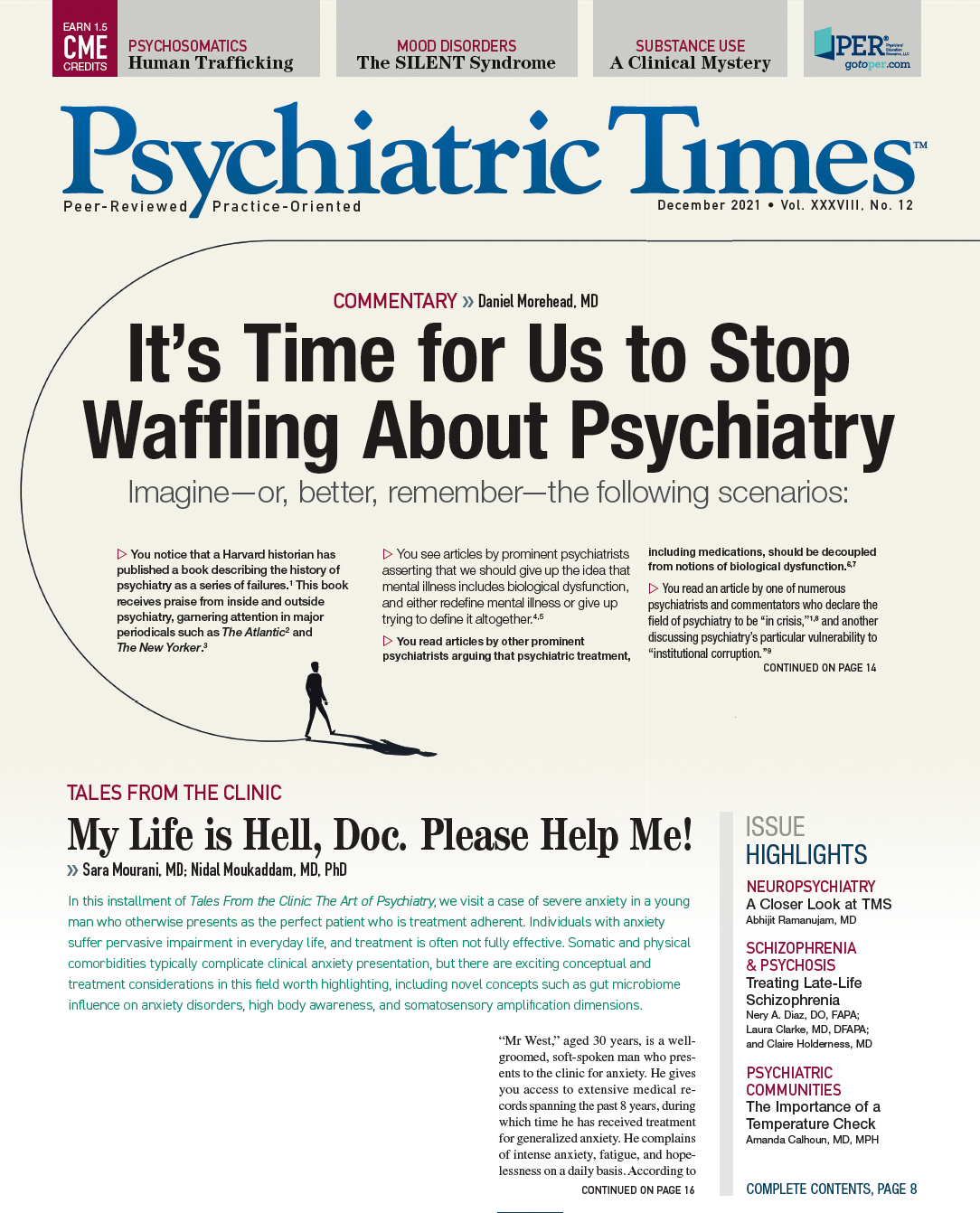Publication
Article
Psychiatric Times
Current Health Care System Cannot Survive Aging Population
Author(s):
It's time to take a critical look at our health care system.
Gorodenkoff/Adobestock

MEDICAL ECONOMICS
The United States has the second largest oldest population in the world. By 2050, 21.4% of our population will be 65 years or older. Heart disease and stroke are the leading causes of death in the US population and account for one-third of deaths in the United States annually. The cost is staggering, with direct costs of $214 billion and a further cost of $138 billion due to lost job productivity.
Cancer is the second leading cause of death in the United States, costing the health care system approximately $174 billion. Diabetes, obesity, and Alzheimer disease are endemic, and their prevalence rates will continue to rise with an aging population. Being able to address the anticipated rise in health care costs due to the aging population is simply not sustainable.
A new approach to care delivery is required. We are saddled with expensive, inefficient health care information technology (HIT) that has severed the personal connection between doctors and patients as well as between nurses and patients. If we do not change how care is delivered in this country, the health care system will collapse into a sea of red ink.
The move to value-based care is sometimes cited as a way to prepare for an aging population. But value-based models depend on enough patient volume to make the model work. Doctors and nurses are stressed enough due to inefficient HIT such as electronic health records, which were designed as billing systems that do not accommodate health care workflows. HIT needs to make the transition from data collection to supporting higher levels of productivity.
Appropriate strategies to decrease the incidence of chronic diseases and the associated costs to the health care system are critical if all Americans are to have appropriate access to care. For instance, a decrease of chronic diseases by 10% would result in savings of greater than $100 billion. Using primary and secondary prevention strategies that rely upon lifestyle changes are extremely cost-effective and will improve the quality of life for the aging population. In particular, improved education to the at-risk population will further enhance the positive effect on cost upon the health care system.
The 21st Century Cures Act mandates that patients have unfettered access to their medical records. Yet navigating through the maze of laboratory and imaging reports and physician notes with current technology is a daunting task for patients. We need to provide an organized approach to this information, with patient-approved secure access to medical records available to all providers caring for the patient. Utilizing Artificial Intelligence (AI) to improve patient medical literacy would also be critical for cost-effective management.
Better technology will also support remote patient monitoring. This will enable the development of virtual care paradigms that will further enhance the ability of health care providers to extend and improve care to the at-risk population, concentrating efforts to the high-cost patient using population health powered by better data and analysis.
The Healthy Lifestyle Program I oversaw at Roper St. Francis Healthcare is an example of the kind of program needed to prepare for the aging population tsunami. The cardiometabolic program is aimed at reducing the risk of chronic disease, normalizing metabolic abnormalities, decreasing the need for medications, and improving the overall fitness and functionality of the patient.
Fine-tuning the patient’s diet and setting fitness goals are essential to this approach. Thus, patients meet with a dietician regularly and adjust their diet to a more balanced and healthier plan. Regularly scheduled small group exercise sessions with “homework” assignments for non-gym days improve fitness. This reduces overall metabolic abnormalities and improves functionality, particularly in patients previously limited by orthopedic issues. Programs such as these need to multiply many times over and eventually become standard for care.
It is past time for technology to create efficiencies and boost performance in health care as it has done in other industries. Despite its failings to date, improved HIT is the only way the current system can handle our nation’s aging population. Technology designed by clinicians for clinicians can restore the doctor-patient connection, empower remote care, and make population health more efficient. Only then will the current health care system be able to accommodate our aging population.
Dr Ciccone is the Chief Medical Officer of Document Storage Systems, Inc. A practicing cardiologist since 1982 and a leading advocate for better health IT, Dr Ciccone is board certified in internal medicine and cardiovascular disease and has additional board certification in integrative and holistic medicine. ❒
READ MORE AT
https://bit.ly/2Z0I54t





